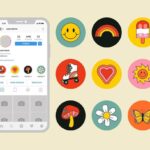The Depth and Complexity Icons are tools designed for educators. It enhances critical thinking and understanding in students. These icons guide learners to engage deeper into subjects and consider them from various complex perspectives. They were developed as part of the Gifted and Talented Education (GATE) program but have been widely adopted in various educational settings. These tools enrich the curriculum and instruction for students.
The Essence of Depth and Complexity Icons

The essence of Depth and Complexity Icons lies in their ability to transform the learning experience from a mere acquisition of facts to a journey of discovery and insight. By integrating these icons into daily lessons, educators can promote a culture of inquiry that encourages students to question, analyze, and reflect on their knowledge. This approach enriches the learning process and prepares students to navigate the complexities of the real world with a more nuanced perspective.
Key Icons and Their Impact
Here’s a brief overview of some common Depth and Complexity Icons and their intended applications:
Big Idea
- Big Idea: Focuses on understanding overarching themes or principles.
- Details: Encourages looking at a topic or idea’s smaller, specific elements.
- Patterns: Identifies recurring elements or factors in a concept, subject, or phenomenon.
Exploration and Analysis
- Unanswered Questions: Highlights areas of ambiguity or uncertainty that may require further inquiry or research.
- Trends: Looks at the direction or sequence of events, ideas, or concepts over time.
- Ethics: Considers the moral or ethical implications of a topic or action.
Understanding Perspectives
- Perspectives: Examines the viewpoints or frames of reference from which different people or groups see and interpret the world.
- Over Time: Focuses on how concepts, ideas, or phenomena change or remain constant throughout history.
- Rules: Identifies the underlying principles or regulations that govern how something operates or behaves.
Language of the Discipline: Focuses on the specific vocabulary, terminology, or jargon unique to a particular field of study or expertise.
Educators use these icons to prompt deeper analysis, encourage critical thinking, and engage students in more sophisticated levels of understanding. They can be applied across subjects and grade levels, making them a versatile tool for enhancing educational outcomes.
Implementing Icons for Enhanced Learning
Implementing Depth and Complexity Icons in the classroom is both a strategic and creative process. Educators can incorporate these icons into lesson plans, assignments, and discussions, tailoring their use to the subject matter and the specific learning objectives. For instance, a history lesson on the Civil Rights Movement could use the Ethics icon to discuss moral implications, the Perspectives icon to explore different viewpoints, and the Trends icon to analyze how societal attitudes have evolved.
Moreover, these icons can be adapted to suit various educational levels, making them a versatile tool for enhancing critical thinking from elementary through high school. By embedding these icons into classroom culture, educators can nurture a generation of thinkers who are not only knowledgeable but also skilled in analysis, synthesis, and evaluation.
Conclusion
The Depth and Complexity Icons represent a powerful toolkit for enriching education and fostering a deep, nuanced understanding of the world. By challenging students to think more deeply and complexly, these icons help prepare them for the challenges of the future, ensuring they have the skills necessary to navigate an increasingly complex world with insight and discernment. In the journey of learning, Depth and Complexity Icons are not just tools but beacons that guide learners toward intellectual depth and comprehensive understanding.
FAQs on Depth and Complexity Icons
Introduction to Depth and Complexity Icons
- What are Depth and Complexity Icons?
Depth and Complexity Icons are visual symbols used in education to encourage deeper thinking and understanding of subjects. They help students explore topics with more rigor, focusing on different aspects such as underlying themes, details, patterns, ethical considerations, and various perspectives.
- Who can benefit from using Depth and Complexity Icons?
While originally developed for the Gifted and Talented Education (GATE) program, Depth and Complexity Icons are beneficial for all students. They are versatile tools that can enhance critical thinking and understanding across various grade levels and subjects.
Enhancing Learning with Depth and Complexity Icons
- How do Depth and Complexity Icons enhance learning?
These icons prompt students to analyze subjects in more detail and from multiple angles, encouraging critical thinking, questioning, and exploration. They help students move beyond surface-level understanding to grasp the nuances and complexities of topics.
- Can Depth and Complexity Icons be used in all subjects?
Yes, Depth and Complexity Icons are designed to be universally applicable across all subjects, including math, science, social studies, language arts, and more. They facilitate a deeper exploration of content, regardless of the discipline.
Implementing Depth and Complexity Icons in Education
- How do teachers implement Depth and Complexity Icons in the classroom?
Teachers can incorporate these icons into lesson plans, assignments, discussions, and assessments. They serve as prompts for deeper analysis and can be tailored to fit specific learning objectives and subject matter content.
- Are Depth and Complexity Icons suitable for group work?
Absolutely. Depth and Complexity Icons can be used to facilitate group discussions and collaborative projects, encouraging students to share and debate different perspectives and insights on a topic.
Preparing for the Future and Accessing Resources
- How do Depth and Complexity Icons prepare students for the future?
By fostering critical thinking, analytical skills, and a deep understanding of complex subjects, these icons prepare students for higher education and the workforce. They help develop the ability to tackle complex problems and consider multiple viewpoints, which are valuable skills in any career.
- Can parents use Depth and Complexity Icons at home?
Yes, parents can use these icons to enrich discussions about books, current events, movies, and more. They’re excellent tools for stimulating curiosity and encouraging children to think more deeply about the world around them.
- Where can educators find resources on Depth and Complexity Icons?
Educators can find resources through educational websites, professional development workshops, and academic publications dedicated to gifted education and advanced pedagogical strategies. Many educational organizations offer materials and guides on how to effectively use these icons.
- Are there any challenges to using Depth and Complexity Icons?
While highly beneficial, effectively integrating these icons into instruction may require initial training and practice. Educators might face challenges in aligning the icons with curriculum standards or adapting them for students at different learning levels. However, with experience and creativity, these challenges can be overcome to enrich the learning experience significantly.
- From where can we buy Depth and Complexity Icons and related materials?
Depth and Complexity Icons and related materials are available through educational publishers, online marketplaces, and websites specializing in resources for teachers. This includes educational publishers, online marketplaces like Amazon, teacher resource websites such as Teachers Pay Teachers, professional educational organizations, and educational consultants. Purchasing these tools requires considering the source to ensure alignment with educational goals and the needs of students, as well as looking for reviews or recommendations from other educators to find the best quality resources.






